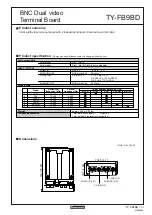
Figure 10-35 Flooding of the LSA
1)
DROthers multicast the LSA update of its directly-connected network to DR and BDR.
2)
After receiving the LSA update, DR floods it to all the adjacent routers.
3)
After receiving the LSA update from DR, the adjacent routers flood it to the other OSPF
interfaces in their own areas.
Area and Route Summarization
OSPF protocol gets every router in the network to obtain a complete network topology through
adjacency relationship, thus to calculate the routing table and accomplish the forwarding of
network data. As the network grows in size, every router has to spend plenty of resources to
store LSDB and calculate routing table, so any delicate changes in the network topology will
require the routers in the entire network to re-synchronize and re-calculate, which will cause
the network to be in the state of frequent “oscillation”.
In order to run effectively and efficiently in a large-scale network, OSPF protocol can divide the
routers in an autonomous system into logic areas identified by Area ID. After the area partition,
the intra-area routers will accomplish the route addressing and data forwarding according to
the standard OSPF routing protocol. While the boundary routers of multiple areas will have to
summarize the information from the routers of all areas to the backbone area that is identified
as Area 0, and then the backbone area will advertise these summary to the other areas. As
below is the model of area partition.
Figure 10-36 Area Model
208
















































